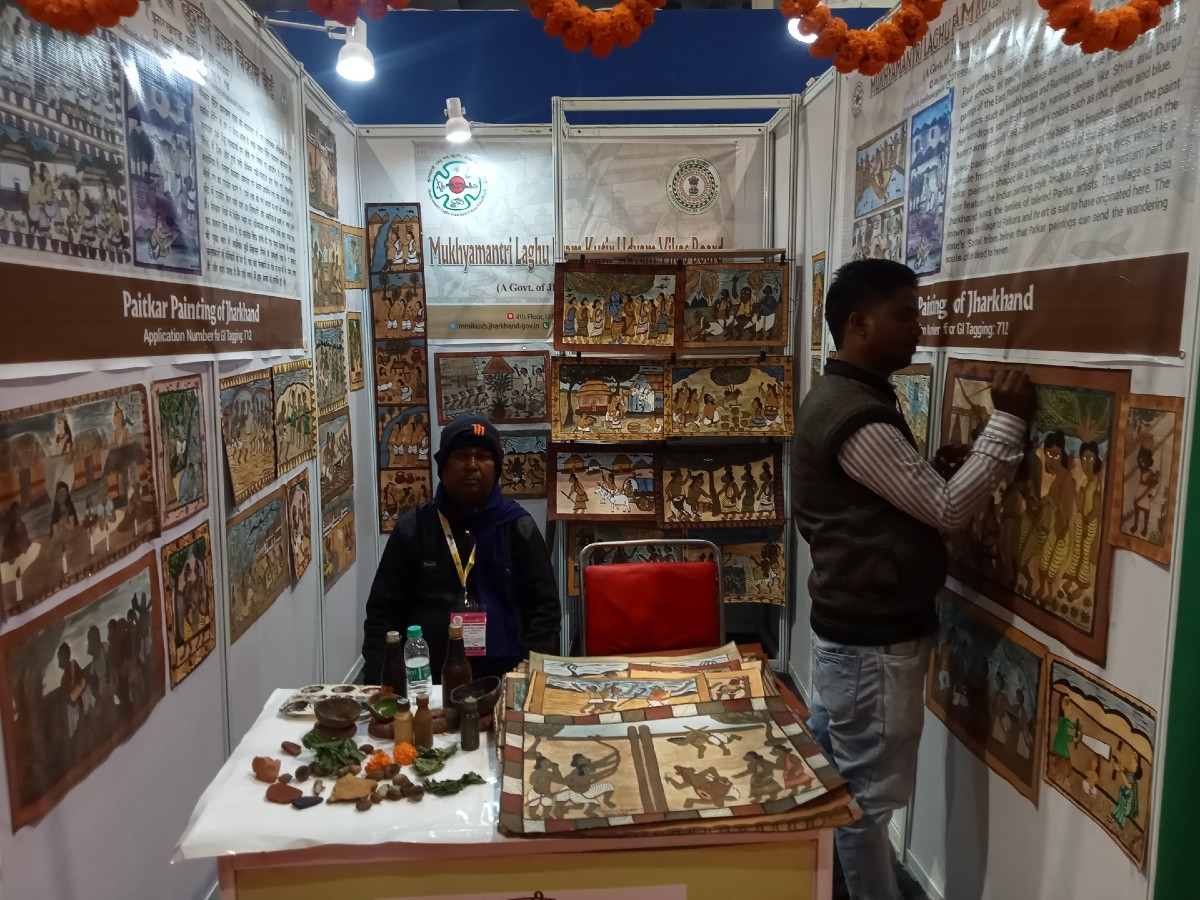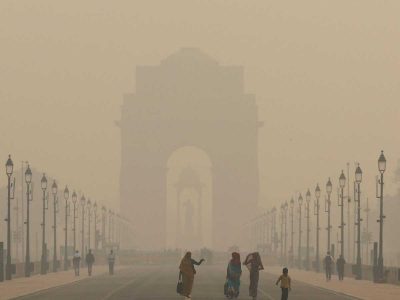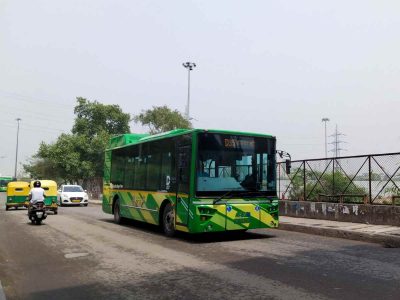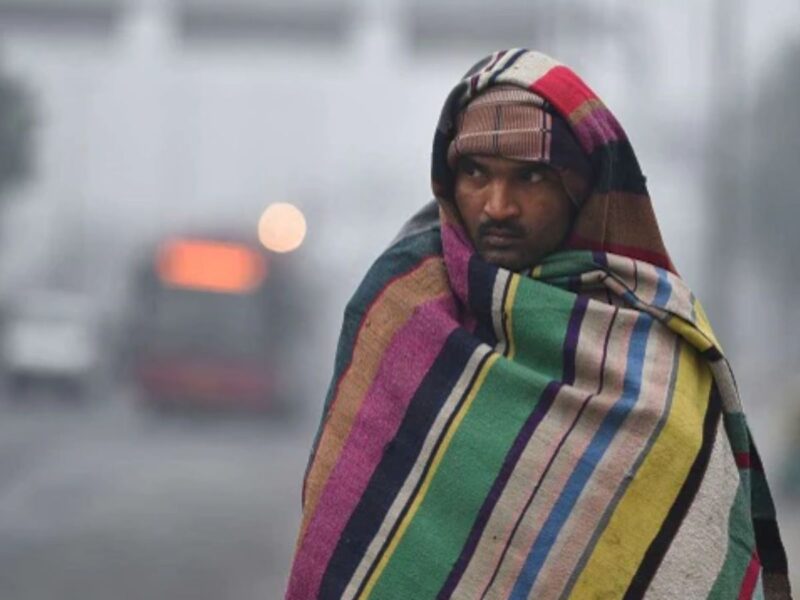As one enters the India International Trade Fair in Delhi’s Pragati Maidan, one witnesses visitors looking in amazement at the many artisanal products on display. They question the artisans to know more about the art and soon leave the stall once they hear the price. Negotiation is out of question and appreciation becomes the default parameter to admire the products.
With the theme “Vocal for Local, Local to Global’, the 41st edition of the Trade Fair is showcasing the artisanal products of various locations and cultures in India.
In the Uttar Pradesh pavilion, artisans of chikankaari, meenakari, marble inlays, and Mainpuri tarkashi welcome the visitors. Many of them ask the price of the products being sold, some make small conversations about the art, while others just observe them from a distance.
Also read: Paharganj market missing the buzz of past
Ramesh Kumar Vishwakarma, a meenakari artist, says, “It is a very ancient artform. With time, this art was reduced to a trickle and remained limited to a few noble families. The present state government gave us a lot of support with initiatives like One District One Product (ODOP) and this changed everything. They provided us a platform, marketing opportunities, toolkits and motivation to continue the artform and make money out of it.”
Vishwarkarma adds that his artworks have now found international platforms such as Dubai Expo and G7 summit because of the initiative.
However, the visitors at the Trade Fair want to know more about the art but the cost of the artefacts remains an obstacle since many in the fair are not willing to buy the expensive items.
Tarkashi artist Lakshmi Pal, who comes from Nangla district of Uttar Pradesh, says, “The paintings that we make are costly because of the labour and material that is needed in making them. Our main target audience is online through digital platforms and local customers. However, these exhibitions help us to create an awareness about these artforms and strengthen our clientele.”
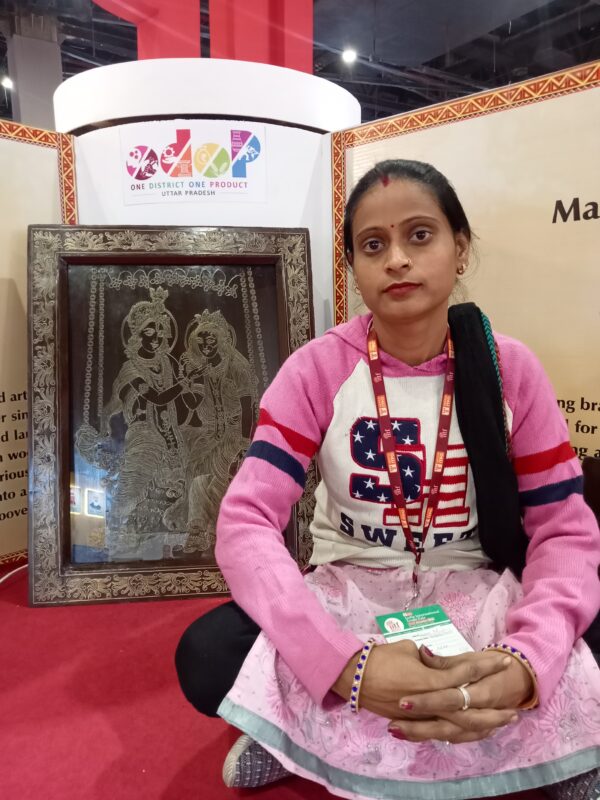
Chikankaari artist and manufacturer Priyanka Singh explains why the products cost more than the ones already available in the market.
“Embroidery techniques and local artforms have been heavily commercialised – and this often leads to manufacturing in bulk of the faux products at cheaper prices. A lot of people assume that chikankaari is a style of fabric when it is a technique of embroidery. All these assumptions have been propagated by manufacturers who only care about demand and supply chain, and not the artisans or the art,” she says.
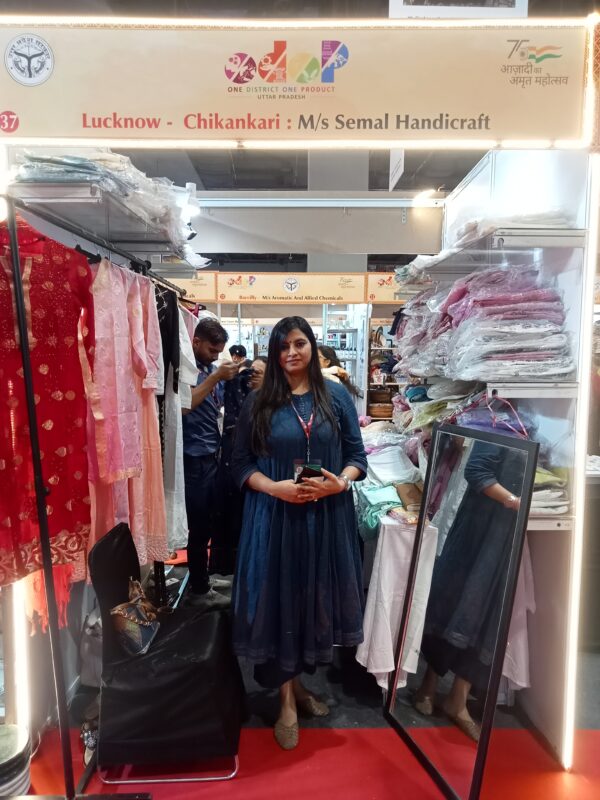
She adds that genuine chikankaari embroidery on silk dresses tend to be expensive because of the labour required to manufacture them.
“These artisans remain underpaid and the quality of the products also remain poor in commercial settings. In order to pay the artisans fairly and actually promote the artform, it is necessary that buyers realise that it can not be obtained at such cheap prices. I am trying to create this kind of awareness about its quality and why artisans suffer because of commercial understanding of the artform,” she says.
Priyanka held a corporate job but switched to manufacturing chikankaari dress during the pandemic. She says that initiatives like ODOP help start-ups as hers to find new platforms.
At a stall that promoted Sohrai tribal art in the Jharkhand pavilion, not a single product was sold in the span of two days.
“The crowd here is not familiar with this artform so they are just trying to know more about it. They are just asking questions to learn about the artform. Although we do have foreign clients that often buy these paintings from us, the overall reaction of the audience at the fair is mixed – they are willing to learn about it but not ready to buy it,” says Adam Christopher Imam, a representative of Sohrai Mahila Kala Vikas Sanyog Samiti, an NGO of around 400 women participants, that promotes awareness towards the art.
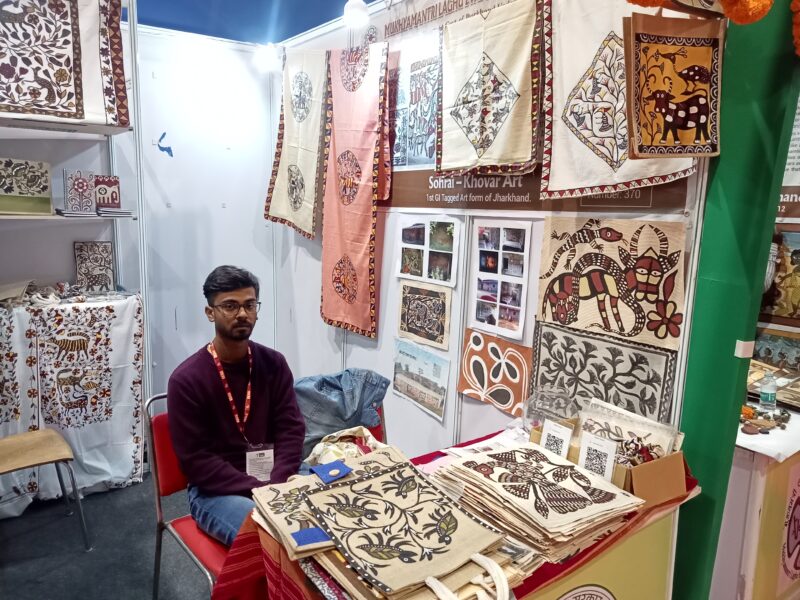
In order to receive wider acceptance, the NGO is trying to attract the audience by incorporating the art into everyday products such as bags, dupattas, files, crunchies, among others.
On a similar note, independent designer Pavan Bara is trying to promote the tribal art of Jharkhand such as Padhiya, Buri and Munda through various youth-friendly products. He started his business during the Coronavirus pandemic and designed masks to promote the artform. However, due to the high cost of manufacturing because of labour, the products remain ‘overpriced’ in comparison to the regular market.
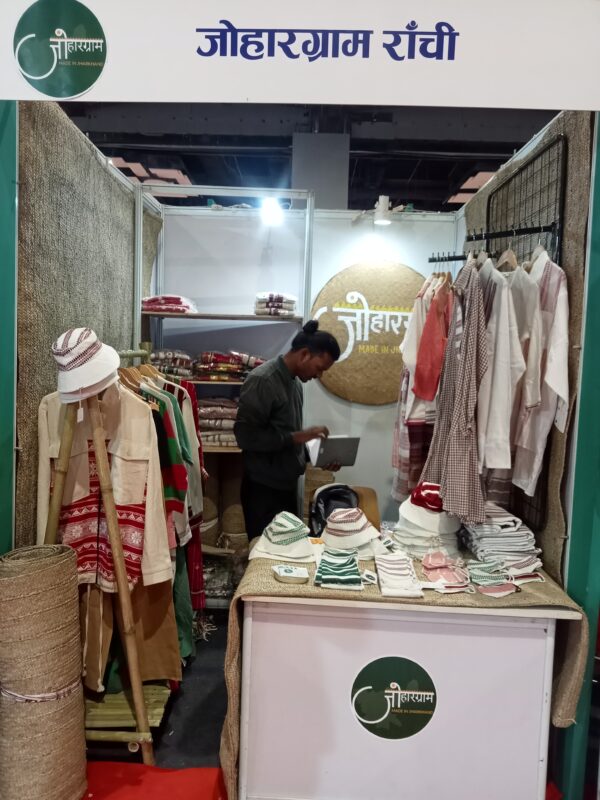
At Chitrawali stall in the Maharashtra pavilion, a similar trend can be seen. Artists are trying to bring back the tribal art of Warli to the mainstream audience through catchy products such as key hangers, cups, pen stands, among others.
For Kishore Gayen, a Paitkar artist from Jharkhand, the fair serves as a platform to create awareness about tribal art. Exhibiting for the first time on any international platform, he says that the visitors at his stall are willing to know more about his work.
“I have not made a single sale as of now but I hope to do so because the audience is trying to learn about the artform,” he says.
Soni Kumari, a Tikuli and Mithila art specialist, shares the same sentiments.
“Not many artists practise this artform (Tikuli). Here, in the fair, a lot of people are coming to ask questions about the art. This is a good sign even though there is no sale as of now. However, we get a lot of appreciation for the beautiful patterns and colours of the art”, she says.
Almost all the artists Patriot interacted with share that the high price remains a big obstacle for the visitors.
However, the appreciation and the motivation they receive from the audience helps them to continue practising their art.
As per Indian Trade Promotion Organization, Bihar, Jharkhand and Maharashtra are partner states while Uttar Pradesh and Kerala are the focus states. Around 12 countries including Afghanistan, Bahrain, Belarus, Iran, Nepal, Thailand, Turkey, UAE, and the UK are participating in the fair. Besides, various central ministries, departments, commodity boards and PSUs are showcasing their achievements in the fair.
Follow us on:
Instagram: instagram.com/thepatriot_in/
Twitter: twitter.com/Patriot_Delhi
Facebook: facebook.com/Thepatriotnewsindia

